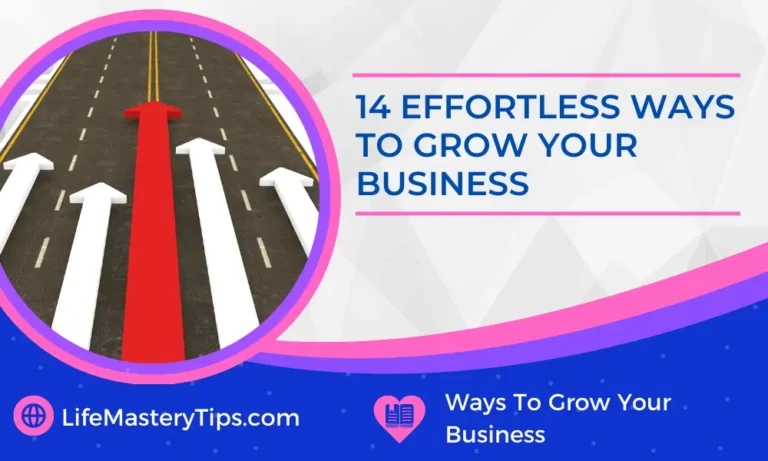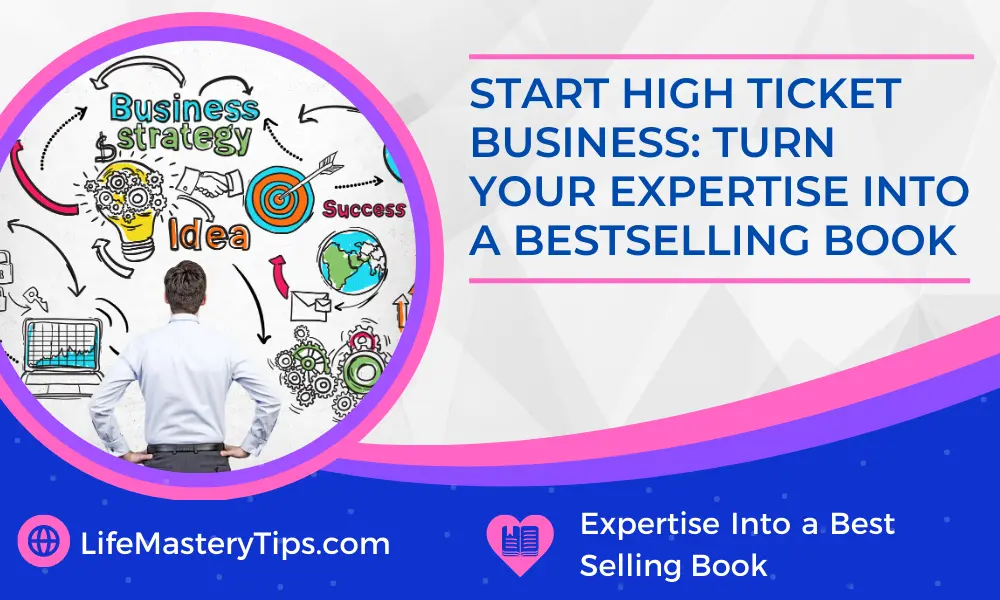As a small business owner, you probably know that there are many factors and ways to grow your business. You may have heard the saying “you can’t be all things to all people.” In other words, it is important to pick a niche and stick with it if you want your company to grow. There are many different ways to grow your business and a lot of them depend on the type of business you have.
For example, if you’re selling products, then it is important to keep an eye on trends in the industry and make sure that you can provide what people want at an affordable price. If you run a service business such as accounting or legal services, then it may be more important for customers to know that they can trust your company with their finances than how much money they will save by using your services.
Businesses use a variety of strategies to help them do so. Some are more effective than others, but all are designed to provide an advantage for your company over the competition. There are many different types of strategies that businesses can choose from, including:
01 – Branding Strategy
The first and most important step in your branding strategy is to define your brand. What kind of company are you? What are the core values that make up your identity? What makes you different from other companies in your industry, and why should someone choose to work with you over them?
Once you have established who you are as a business, the next step is to consider how others see and perceive what makes up your company. Are they aware of these qualities already? If not, how can they be communicated more effectively through marketing efforts (like advertising) so that people understand what sets them apart from their competitors?
02 – Product Marketing Strategy
Product marketing strategy is about selling your product online and getting it in front of the right audience. It’s also about giving your product a personality, creating content that sells your product, and making sure everything you do is on-brand.
Product marketing strategy as an umbrella term refers to all of the activities that go into creating a successful online brand or company. It encompasses all things marketing (and often sales) related: from SEO and paid advertising, to email campaigns and social media management—this is what differentiates it from general digital marketing strategies.
03 – Pricing Strategy
Pricing strategy is one of the most important elements in your business because it can make or break your company. A good pricing strategy will help you grow your business and attract new clients, while a bad pricing strategy can make it more difficult for you to find success.
To create a strong pricing strategy, start by considering how much value is being offered by your products and services. Do they offer real value? Are they affordable? Are they affordable to the market you’re targeting? Is there an opportunity to market them at higher prices than competitors? The answers to these questions should help define the right price point for what you’re selling, as well as where in that range the best place would be for each product or service category based on its specific features (more expensive products may have better quality/features).
04 – Niche Strategy
Niche strategy: I’m sure you have heard of this strategy before, but if not then here is a brief summary. The niche strategy is when you focus on targeting a specific audience rather than trying to appeal to everyone. In order to stand out from the competition, it is important that your product or service has value for your target audience and solves a problem that needs to be solved
Find an underserved market: An underserved market could be one where there are many people who want what you are offering but nobody is providing it yet. Or it could be something else like putting together an event that helps people in your community or helps them make smart decisions about their lives
Create content targeted at them: It is possible that even though there are other businesses in existence already, none of them offer what yours does so creating content targeted towards those people will help build trust with them and establish yourself as an expert in their field – This can also increase visibility which means more traffic for your website!
05 – Networking Strategy
Networking is one of the great ways to grow your business, and it can be done in person or online. In fact, there are many ways to network with other professionals. You could sign up for social media groups that focus on the same industry as your own business. By joining these groups, you will be able to meet people who work in the same field as you. Connecting with others in this way helps build relationships that may lead to new business opportunities down the line!
06 – Affiliate Marketing Strategy
Affiliate marketing is a marketing strategy that involves earning a commission by promoting other people’s (or company’s) products or services. There are many advantages to affiliate marketing, including that it can be done anywhere, from your home or office. You don’t need to be in a brick-and-mortar store to sell their products. Another benefit of affiliate marketing is it takes less time than traditional advertising methods. It also allows you the ability to reach customers all over the world who are looking for products and services just like yours.
The disadvantages of affiliate marketing include the fact that there is no guarantee that any particular product will sell well on your website; so if you’re not careful about which items you choose for promotion, then this might mean losing money instead of making any profit at all! Also if someone clicks through one of your links but doesn’t actually buy anything then they won’t make any commission off them either – so only promote those products where there’s high demand among consumers otherwise no one will see it as useful information!
07 – Content Marketing Strategy
Content marketing is a way to attract and retain customers by creating and distributing valuable, relevant, and consistent content to your target audience. Content marketing includes blogging, social media marketing, email newsletters, and other forms of digital content.
The goal of this strategy is for you to become an authority in your field. You will do this by providing helpful information about the topic that your customers are interested in reading about or learning more about. You can also use videos or podcasts as part of this strategy but make sure there is enough written content for people who don’t want to watch videos all the time!
08 – Product Differentiation
Product differentiation is a strategy that helps your business stand out from competitors by offering products or services that are unique and different. The goal of this strategy is to provide customers with a reason to buy from you rather than your competitors, which may be easier said than done.
One way to achieve product differentiation is through product design. For example, if you’re selling shirts online and one of your competitors is offering similar styles as you but in different colors, consider adding some designs that aren’t offered elsewhere on the market (or at least not by many other companies). Another way would be through packaging: maybe you can package these unique designs in a way that makes them more appealing.
Perhaps there’s another company out there that offers customers the same thing as yours but at half the price; it’s important for you to understand why this might be happening before making any changes yourself!
09 – Cost Leadership
Cost leadership is a strategy that focuses on providing the lowest-cost goods or services to the consumer. In order for this strategy to work, your company must be able to produce goods or services at a lower cost than its competitors. Then, it must be able to pass on these savings to the consumer.
Cost leadership means that you’re producing products and offering services at lower prices than your competitors in order to win over customers who are looking for a deal or who prefer getting their needs met by paying less money. You might have seen signs of companies using this strategy in recent years: fast food chains like McDonald’s have been focusing on new discount options while grocery stores are trying every trick they can think of (like coupons) in order to bring customers through their doors instead of letting them shop online where prices tend not to be as high as what we’d find at our local grocery store.
10 – Innovation
Innovation is the process of creating new products, services or processes. It’s about creating something new that creates value for customers and for your company. Innovation isn’t just about technology; it also includes product development and business processes.
Innovation is the process of creating new products, services or processes. It’s about creating something new that creates value for customers and for your company. Innovation isn’t just about technology; it also includes product development and business processes. Innovation isn’t just about technology; it also includes product development and business processes.
11 – Customer Focus
The first step of any strategy is to ensure that your business is focused on what your customers need and expect from you. You should always be aware of the changing expectations of your customers, and make sure that you are keeping up with these changes in order to keep them happy.
Businesses without customer satisfaction suffer in the long run because it’s much easier for new competitors to enter an industry when they can offer something new or better than existing competitors do, meaning there will always be someone ready to take their place if they don’t keep up with changing consumer demands.
Customers are an important asset for any business because they’re ultimately responsible for generating revenue by buying products from a company at some point in time; therefore making sure these individuals are satisfied with their experience with a brand or store is essential for success!
12 – Customer Segmentation
Customer segmentation is the process of dividing a market into groups of customers who are similar in some way. Segmentation helps you to better understand your customers and to develop products that meet their needs. You can segment by geography, demographics, psychographics, and other factors.
Segmentation is the first step to understanding your market. You can segment by geography, demographics, and psychographics.
13 – Service Differentiation
Service differentiation means providing a better customer experience than your competitors. You can do this by offering a unique service, product or combination of products and services that meet the needs of your target market. This is often done through innovation – developing new ways to serve customers (for example, putting together a unique package for each customer based on their preferences).
In addition to offering something new, you should make sure that what you’re offering is differentiated from your competitors in some way. If everyone has the same basic services available at all times then it doesn’t matter which one of them you choose because there’s no difference between them: they’re all equivalent in every way except price (and not necessarily even then). By creating something truly different then customers will see value in doing business with you instead of going somewhere else where they could get similar things offered without anything extra added on top of them by an individual company.
14 – Integrated Low-Cost Differentiation Strategy
Integrated low-cost differentiation is an approach that focuses on offering lower prices while still providing value. This can be done by reducing the costs of production and distribution, or by reducing the quality of your product or service. You might also consider reducing the amount of time it takes to deliver a product or service, either by cutting back on labor or by increasing automation in order to save money.
This approach is best used when you are offering a product or service that is either necessary or highly desired by your target market. You can’t offer the lowest price on everything, nor should you want to; if you do, then your customers will expect the same low prices on everything else they buy from you. Instead, focus on offering lower prices for products and services that are similar or identical to those of your competitors while still providing value.
These Strategies Will Help Your Business Grow
Branding strategy: A branding strategy is all about establishing a unique and consistent brand personality, message, and identity that helps you stand out from the competition. The goal of a branding strategy is to make your company better known in the marketplace so that consumers see you as a leader in your industry.
Product marketing strategy: A product marketing strategy helps you develop messaging around products or services so customers know what they’re getting before they buy. It also covers how you position your offerings in relation to similar offerings on the market so potential customers can easily understand what you have to offer them—and why they should buy from you instead of your competitors.
Pricing strategy: Pricing is one of the key components of any business plan because it affects everything else—from profit margins to customer acquisition costs (CAC). A pricing strategy lets companies figure out how much money they need at each stage of growth while still being profitable; it also tells them which customers they should target based on price point ranges set by competitors as well as other factors such as demographics or psychographics (e., who someone is).
Conclusion – Ways to Grow Your Business
You may be wondering what to do next. Well, you can start by identifying your business’s pain points and coming up with strategies that will solve those problems. For example, if your website isn’t performing well on Google, then it might be time to invest in SEO services or hire someone who knows how to do it for you. And if you don’t have enough money for advertising campaigns but still want more customers on board? Try using social media platforms like Facebook or Instagram instead!




